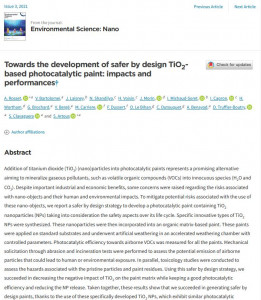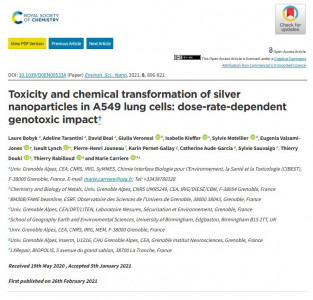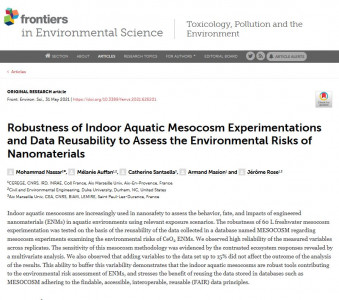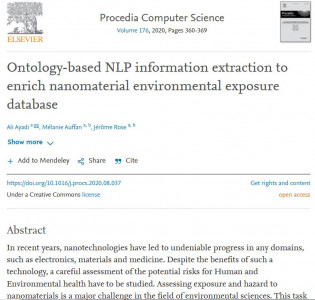Authors : A.E. Pradas del Real (a,b), H. Castillo-Michel (b), R. Kaegi (c), C. Larue (d), W. de Nolf (b), J. Reyes-Herrera (b), R. Tucoulou (b), N. Findling (a), E. Salas-Colera (b) and G. Sarret (a) (a) ISTerre (Institut des Sciences de la Terre), Univ. Grenoble Alpes, CNRS, Grenoble (France); (b) ESRF; (c) Eawag, Particle Laboratory, Dübendorf (Switzerland); (d) ECOLAB, Universite de Toulouse, CNRS, INPT, UPS, Toulouse (France).
Titanium dioxide (TiO2) nanoparticles are one of the most commonly produces nanomaterials worldwide. After use, a large proportion of TiO2 ends up in the agricultural soils which can be a potential environmental problem.
TiO2 is also present naturally in the environment so it is important to distinguish between the natural form from the anthropogenic one, to detect anthropogenic inputs. They used synchrotron techniques to study the nanoparticles in sewage sludge and soil.
In this study, three matrices were compared: sewage sludge, agricultural soil that had never received sewage sludge, and sludge-amended soil.
After determined the size distribution of TiO2 scientists noticed that soil and sludge have similar size distribution. Moreover, they observed that the two major dioxide titanium species, anatase and rutile, were in roughly equal proportion. Anatase and rutile are two different forms of TiO2, each of them are composed by TiO2 and different chemical elements. This information is important because rutile and anatase have different toxicities, and it is very difficult to know which polymorph is used in which type of product, and the global proportions of rutile and anatase released into the environment.
Finally, the morphology of the crystals proved to be a relevant criterion to discriminate natural versus anthropogenic TiO2. In the sludge, which is contaminated by anthropogenic dioxide titanium form, we can observe smooth particles. On the opposite, in the soil which contain just natural form, we noticed the presence of rough and irregular TiO2 particles.
TiO2 particles undergo weathering and transformations in acidic soils or in the rhizosphere. Thus, the morphological differences may attenuate over time due to the weathering of TiO2 minerals.
Consequently, it is likely that with time, engineered TiO2 becomes indistinguishable from the natural background in soils.
To conclude, the X-ray studies complemented microscopy methods providing chemical identification of the TiO2 species and location of the nanoparticles within soil and sludge matrixes.









